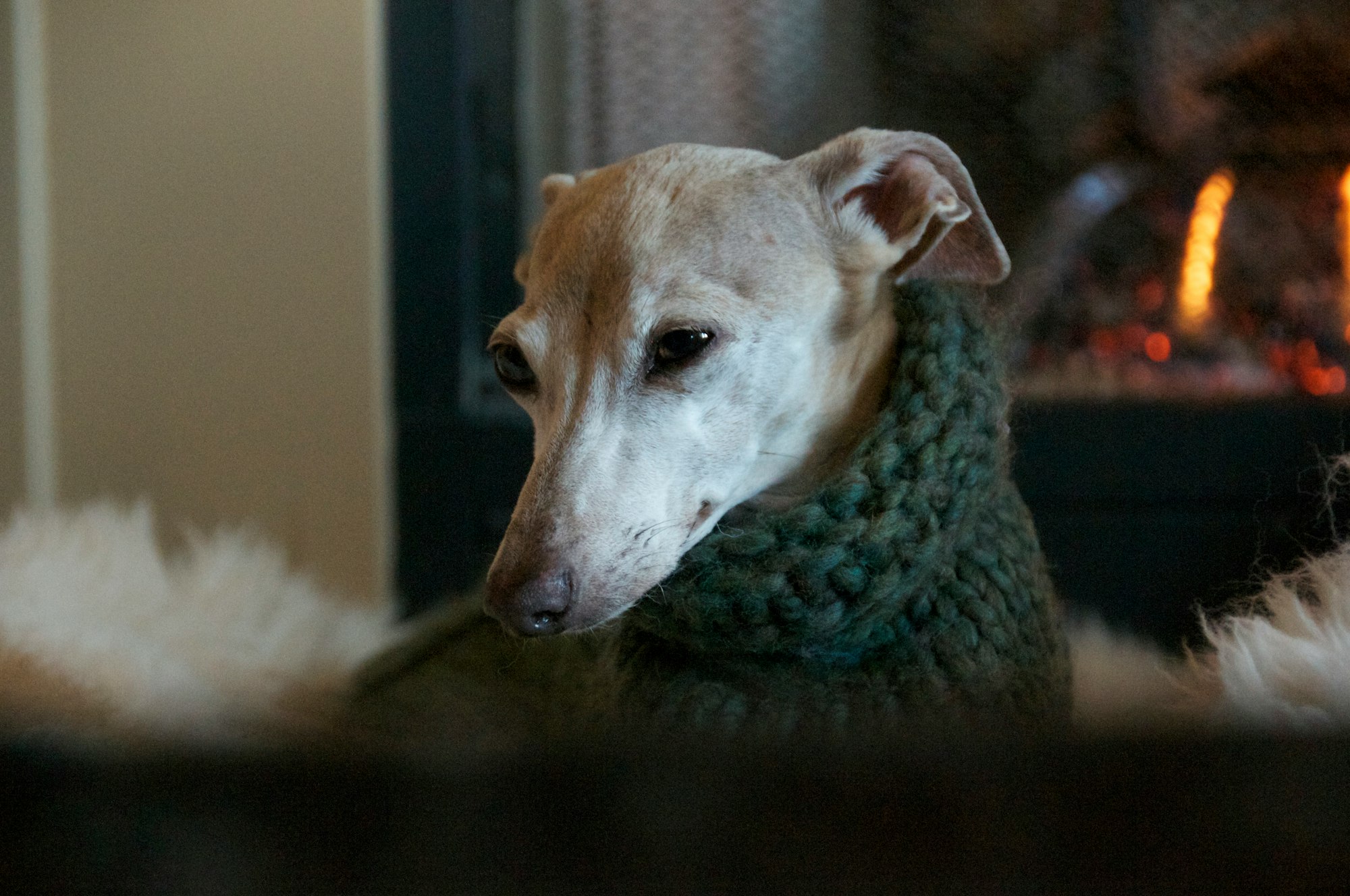In the world of sighthounds, two captivating breeds have captured the hearts of dog enthusiasts everywhere: the Whippet and the Italian Greyhound. Sleek, agile, and undeniably elegant, these slender canines exude grace and athleticism, leaving many potential pet owners pondering the subtle distinctions between them.
In this article, we embark on a fascinating journey to uncover the nuances that set these breeds apart while also celebrating their shared heritage. From their ancient lineage to their distinctive temperaments and unique physical attributes, we will delve into the rich tapestry that defines these captivating canines, enabling you to make a well-informed decision about which of these swift-footed companions may be the perfect fit for your home and lifestyle.
Meet the Italian Greyhound
As we delve into the world of the Italian Greyhound, it is essential to appreciate the distinctive features that make this breed stand out. Often referred to as the epitome of elegance in the canine kingdom, the Italian Greyhound possesses a unique blend of refined aesthetics, endearing temperament, and rich historical roots.
In this section, we will explore the breed's appearance, temperament, and more, providing a comprehensive understanding of what makes these diminutive sight hounds truly exceptional.
Appearance of the Italian Greyhound
Exuding an air of aristocratic sophistication, the Italian Greyhound is a small, slender, and finely-boned breed. Standing at a height of 13 to 15 inches and weighing between 7 to 14 pounds, these miniature sight hounds are characterized by their graceful, curving lines and streamlined bodies.
Their coat is short, smooth, and glossy, coming in a variety of colors, including fawn, blue, black and various shades of brown. They do not come in brindle like the Whippet does.

Temperament of the Italian Greyhound
Delightful and affectionate, the Italian Greyhound boasts a gentle, yet playful temperament. Known for their strong bonds with their human companions, they thrive in environments where they can bask in the warmth of their owner's love and attention.
While they possess the keen instincts and alertness of a sight hound, they also exhibit a more reserved and sensitive nature, making them an ideal choice for those seeking a calm, loving, and low-maintenance companion. Though they are known for their bursts of energy and impressive agility, Italian Greyhounds are equally content snuggling up on the couch, making them adaptable to a variety of lifestyles and living situations.
Exercise of the Italian Greyhound
Exercise is a vital aspect of maintaining the physical and mental well-being of any dog, and Italian Greyhounds are no exception. Despite their small size, these graceful sighthounds need regular exercise to keep them happy, healthy, and mentally stimulated.
Daily walks are essential to satisfy their innate curiosity and provide them with the opportunity to explore their surroundings. A brisk 30-minute walk, once or twice a day, is generally sufficient to meet their exercise requirements. However, Italian Greyhounds also enjoy short, intense bursts of activity, such as sprinting or playing chase in a securely fenced area. These activities allow them to tap into their sighthound instincts and provide them with additional physical stimulation.
In addition to physical exercise, Italian Greyhounds benefit from mental stimulation. Providing interactive toys, puzzle games, and engaging in training sessions can help to challenge their intellect, reduce boredom, and prevent destructive behaviors.
It is important to remember that Italian Greyhounds are more sensitive to temperature extremes due to their lean bodies and thin skin. During hot or cold weather, take extra precautions to ensure their comfort and safety, such as providing them with appropriate clothing, limiting outdoor activities, or adjusting the intensity of their exercise. Always be mindful of their physical condition and adapt their exercise routine accordingly to ensure their well-being.
Training of the Italian Greyhound
When it comes to training, the Italian Greyhound can be both a quick learner and a sensitive soul. Positive reinforcement techniques, such as praise, treats, and play, are key to fostering a strong bond and successful training outcomes. Patience and consistency are vital, as these dogs may be more prone to stubbornness or timid behavior. Early socialization is particularly important to help Italian Greyhounds build confidence and adapt to new situations, people, and other animals.
Health of the Italian Greyhound
Italian Greyhounds are generally a healthy breed, with a lifespan of 12 to 15 years. However, like all dogs, they are predisposed to certain health issues. Some potential concerns include dental problems due to their small mouths, hip dysplasia, luxating patellas, and epilepsy. Regular vet check-ups, a balanced diet, and routine dental care can help to prevent and detect health problems early on. Additionally, their lean bodies and thin skin make them more sensitive to temperature extremes, so be sure to provide them with adequate protection during hot or cold weather.

Grooming of the Italian Greyhound
The Italian Greyhound's short, sleek coat requires minimal grooming to maintain its shine and cleanliness. A weekly brushing with a soft-bristle brush or grooming mitt will help remove loose hair and keep their coat looking its best. These dogs are relatively low-shedding, making them a suitable choice for those with allergies. Regular nail trimming, ear cleaning, and dental care are also essential components of their grooming routine, ensuring their overall health and well-being.
Meet the Whippet
Diving into the captivating world of the Whippet, we encounter a breed that masterfully balances athleticism with elegance. Often referred to as the "poor man's racehorse," the Whippet has a storied history in both sport and companionship. In this section, we will explore the striking appearance and endearing temperament of these versatile sight hounds, providing a comprehensive understanding of what makes the Whippet a beloved breed among dog enthusiasts worldwide.

Appearance of the Whippet
The Whippet is a medium-sized, sleek, and powerful sighthound, known for its impressive speed and agility. Standing at a height of 18 to 22 inches and weighing between 25 to 40 pounds, Whippets possess a muscular yet graceful physique that is built for acceleration. Their short, smooth coat comes in a wide variety of colors and patterns, including solid, brindle, and various shades of white with colored markings. Their expressive, dark eyes and rose-shaped ears contribute to their overall charm, while their arched backs and long, tapering tails reflect their streamlined nature.
Temperament of the Whippet
Whippets are known for their gentle, affectionate, and friendly temperament. They form strong bonds with their human companions and are often described as "Velcro dogs" due to their desire to be close to their owners. While they are exceptionally fast and energetic in the pursuit of prey or during play, Whippets can be surprisingly calm and quiet indoors, making them well-suited for a variety of living situations.
Their intelligent and adaptable nature makes them excellent companions for families, singles, and seniors alike. Whippets are generally good with children and other pets when properly socialized, although their sighthound instincts may prompt them to chase smaller animals.
Exercise of the Whippet
Exercise is a crucial aspect of maintaining the overall well-being of the Whippet, a breed known for its remarkable speed and agility. These dogs require regular exercise to keep them physically fit, mentally stimulated, and to prevent boredom that can lead to destructive behaviors.
Whippets thrive on a combination of daily walks and more intense activities that allow them to tap into their sighthound instincts. A brisk 30-45 minute walk, once or twice a day, will help to satisfy their curiosity and provide them with ample opportunities to explore their surroundings. In addition to walks, Whippets benefit from off-leash play sessions in a securely fenced area, where they can sprint, chase, and demonstrate their impressive acceleration. Activities such as lure coursing or agility training can also be excellent outlets for their energy and provide them with mental stimulation.
Training of the Whippet
Whippets are intelligent and generally eager to please, making them fairly easy to train when using positive reinforcement techniques. Offering rewards such as treats, praise, and play will help to foster a strong bond and encourage successful training outcomes. Consistency and patience are key, as Whippets can be sensitive and may become discouraged or disinterested if training is too harsh or repetitive.
Early socialization is particularly important for Whippets to help them develop confidence and adaptability around new situations, people, and other animals. Enrolling your Whippet in puppy socialization classes or exposing them to a variety of experiences during their formative months will contribute to a well-rounded, well-behaved adult dog.

Health of the Whippet
Whippets are generally a healthy breed, with a lifespan of 12 to 15 years. However, like all dogs, they can be predisposed to certain health issues. Some potential concerns for Whippets include hip dysplasia, heart disease (such as mitral valve disease), and deafness. Regular veterinary check-ups, a balanced diet, and maintaining a healthy weight can help to prevent and detect health problems early on.
As Whippets have a lean body and minimal body fat, they may be more sensitive to temperature extremes. It is essential to provide them with adequate protection during hot or cold weather, such as a coat or sweater during the winter months, and to be mindful of their physical condition when exercising.
Grooming of the Whippet
Whippets have a short, smooth coat that requires minimal grooming to maintain its appearance and cleanliness. A weekly brushing with a soft-bristle brush or grooming mitt will help to remove loose hair and distribute natural oils throughout their coat, keeping it looking healthy and shiny. Whippets are considered to be low-shedding dogs, making them a suitable choice for individuals with allergies.
In addition to coat care, regular nail trimming, ear cleaning, and dental care are essential components of a Whippet's grooming routine. Keeping up with these tasks will help to ensure their overall health and well-being and will prevent potential issues from developing.
Final Thoughts
In conclusion, both the Whippet and the Italian Greyhound are captivating breeds that boast grace, elegance, and impressive speed. While they share common ancestry and similar physical traits, each breed has its own unique characteristics that set them apart.
The Italian Greyhound is a small, refined sighthound that cherishes its bond with its human companions. With its delicate appearance, gentle temperament, and adaptability to various living situations, the Italian Greyhound makes a wonderful companion for those seeking a calm, loving, and low-maintenance pet.
On the other hand, the Whippet, slightly larger and more athletic, offers a perfect balance between high-energy play and calm, indoor relaxation. Its friendly and adaptable nature makes it an excellent companion for families, singles, and seniors alike, provided they have the opportunity for regular exercise and mental stimulation.
When considering which breed is the right fit for you, it is essential to take into account factors such as your lifestyle, living environment, and personal preferences. Both the Whippet and the Italian Greyhound are exceptional dogs with much to offer, and by understanding the intricacies of each breed, you can make a well-informed decision about which captivating sighthound will best complement your life.
Get more expert advice on pet-parenting by visiting the Off Leash blog at TryFi.com.
TryFi's The Fi Dog Collar is a must-have for any pet parent, it's a GPS tracking collar that helps you keep tabs on your dog's location, activity, and sleep patterns, and alerts you if they escape your backyard. Try the Fi Dog Collar today!

